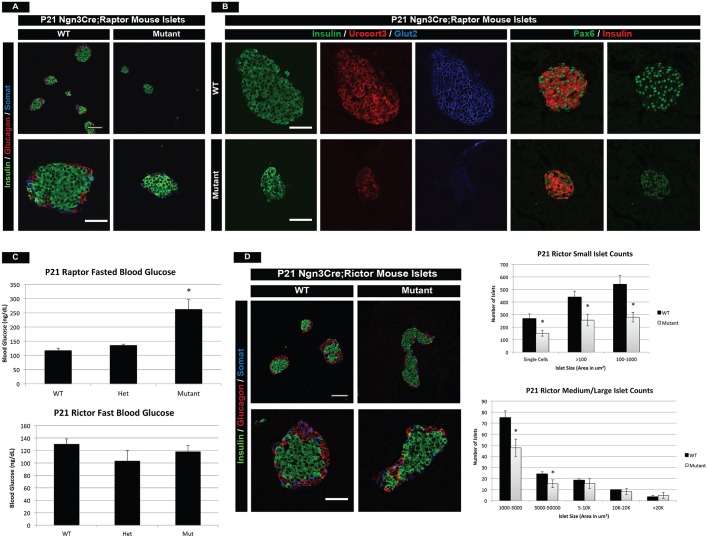Fig. 6.
mTOR complexes 1 and 2 have distinct roles in postnatal islet development. (A) Islet hormone immunofluorescence highlights smaller and fewer islets in Raptor mutants (complex 1) as compared with wild type at P21. (B) Immunofluorescence for the maturation and functional markers Ucn3 and Glut2 demonstrates reduced Ucn3 and virtually absent Glut2 protein in Raptor mutant β cells. In addition, Raptor mutant β cells have reduced Pax6 expression at P21. (C) Analysis of fasted blood glucose levels identifies increased blood glucose in Raptor mutant animals, yet normal levels in Rictor mutants (complex 2) at 3 weeks of age. (D) (Left) Immunofluorescence for Rictor mutant islets shows a slight morphological defect in larger islets. (Right) Quantification of islet number based on islet size. Lower islet counts are indicative of an islet mass defect. Scale bars: 50 µm. Mean±s.e.m.; *P<0.05. See also Fig. S7, and Table S3 for the number of animals used.

